Descriptive Writing Topics For Class 7 Format, Examples, Exercises
Descriptive writing is a style of writing that paints a vivid picture of a person, place, or thing in the reader’s mind. It appeals to the five senses – sight, sound, smell, taste, and touch – to create a sensory experience for the reader. In Class 7, students can improve their descriptive writing skills by practicing writing on a variety of topics.

Format Of Descriptive Writing Topics For Class 7:
Before we get into the examples and topics, let’s discuss the format of descriptive writing. The format of descriptive writing usually follows this structure:
1. Introduction: In the introduction, the writer introduces the subject of the writing and provides some background information about it. 2. Body Paragraphs: The body paragraphs provide detailed descriptions of the subject. The writer should use sensory details and vivid language to help the reader visualize the subject. 3. Conclusion: The conclusion wraps up the writing and leaves the reader with a lasting impression.
Also Read: Descriptive Writing Class 9
Examples Of Descriptive Writing Topics For Class 7:
Example 1: A description of a beach
Introduction: A beach is a place that is loved by many. It is a place where you can relax, soak up the sun, and enjoy the sound of the waves crashing against the shore.
Body Paragraphs: The sand is warm and soft under your feet, and the water is crystal clear. As you walk along the beach, you can feel the warm sun on your skin and hear the seagulls calling out to each other. The smell of saltwater and sunscreen fills the air, and you can taste the salt in the air on your lips. In the distance, you can see sailboats and parasailers gliding across the water.
Conclusion: The beach is a beautiful and peaceful place that can make you forget about your worries and just enjoy the moment.
Example 2: A description of a forest
Introduction: A forest is a place of mystery and intrigue. It is a place where you can escape from the hustle and bustle of everyday life and get lost in nature.
Body Paragraphs: The forest is alive with the sound of birds singing, leaves rustling, and animals scurrying about. The trees tower above you, casting long shadows on the forest floor. The air is cool and fresh, and you can smell the earthy scent of the forest. As you walk deeper into the forest, you can feel the soft moss under your feet and the cool breeze on your face.
Conclusion: A forest is a magical place that can transport you to another world and help you connect with nature.
Descriptive Writing Topics For Class 7:
Now that we have looked at some examples of descriptive writing, let’s look at some topics that students can use for practice. Here are some descriptive writing topics for Class 7:
1. A place you love to visit 2. Your favorite food 3. Your pet 4. A person you admire 5. Your favorite hobby 6. A memorable vacation 7. A historical monument 8. A rainy day 9. A snowy day 10. A day at the park
Exercises For Descriptive Writing Topics For Class 7:
Here are some exercises that students can use to practice their descriptive writing skills:
1. Use sensory details: When describing a person, place, or thing, use sensory details to help the reader visualize the subject. For example, instead of saying “The tree was tall,” you could say “The tree soared into the sky, its branches reaching towards the sun.”
2. Use vivid language: Use descriptive language to make your writing more engaging. Instead of saying “The bird was flying,” you could say “The bird soared gracefully through the air, its wings flapping gently in the breeze.”
3. Use figurative language: Metaphors, similes, and other forms of figurative language can add depth and richness to your writing. For example, instead of saying “The sunset was pretty,” you could say “The sunset was a fiery explosion of oranges, pinks, and purples that lit up the sky like a work of art.”
4. Practice observing: Take the time to observe your surroundings and pay attention to the details. Notice the way the light hits an object, the sounds you hear, the smells in the air, and the textures you feel. This can help you create more vivid and realistic descriptions in your writing.
5. Use a variety of sentence structures: Varying your sentence structures can help keep your writing interesting and engaging. Use short, simple sentences for emphasis, and longer, more complex sentences for description.
6. Edit and revise: After you have written your descriptive piece, take the time to read it over and make any necessary edits or revisions. Look for areas where you can improve your descriptions or add more details to make your writing more engaging.
Conclusion On Descriptive Writing Topics For Class 7
Descriptive writing is an important skill for Class 7 students to develop. By using sensory details, vivid language, and figurative language, they can create engaging and vivid descriptions of people, places, and things that transport the reader to another world. By practicing with a variety of topics and exercises, students can improve their descriptive writing skills and become more confident and effective writers.

The Top 20 Descriptive Paragraph Examples
Written by Dan
Last updated March 20, 2024
Are you tired of hearing your students say, “I don’t know how to write a descriptive paragraph!”? If so, you’re not alone! Writing compelling descriptions can be one of the most challenging parts for teachers and students.
But it doesn’t have to be so tricky! With suitable examples and guidance, anyone can become an expert in vividly describing people, places, things or events.
Before jumping into the deep end of resources out there, it’s a good idea for students to check out websites offering free essay samples, like StudyMoose .These platforms provide a wide range of free essays that can help students enhance their writing skills.
In this blog post, I will provide twenty stellar examples you can use as models for teaching your students how to write compelling descriptive paragraphs.
Related : For more, check out our article on Building Suspense In Writing here.
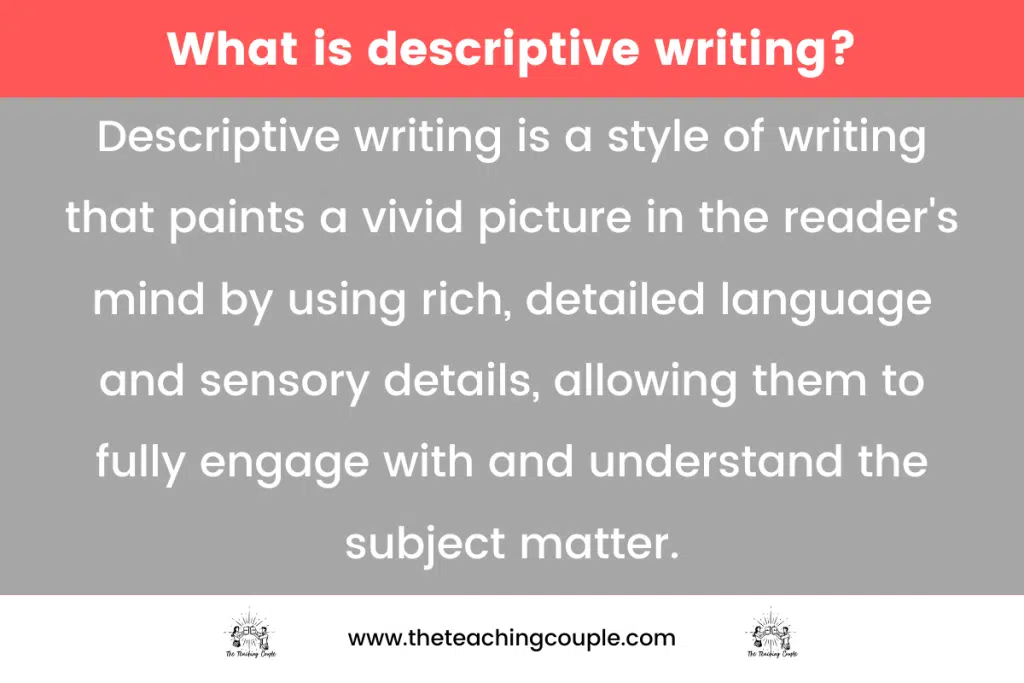
According to Grammarly , descriptive writing can enhance content, from an essay describing a historical event to a blog post narrating a personal experience.
IUP’s Writing Center further explains that effective descriptive writing evokes sights, smells, sounds, textures, and tastes, immersing readers in the narrative. But how does one master this craft?
Study.com provides a comprehensive lesson on the techniques and examples of descriptive writing, while LanguageTool offers insights into the illustrative writing style.
Table of Contents
Descriptive Paragraph Example 1:
The sun-kissed beach was a veritable haven. Soft, white sand stretched lazily from one end of the coastline to the other, inviting visitors to take off their shoes and dip their toes in the cool water.
Warm sunshine beat down on my skin as I walked along the smooth shoreline, enjoying the salty ocean breeze that greeted me with each step. In the distance, I could see boats anchored in the harbour, their masts swaying gracefully with the rhythm of the waves.
Descriptive Paragraph Example 2:
The older man shuffled slowly down the dirt road, a faded baseball cap pulled low over his eyes to shield them from the sun’s rays. He wore overalls and a flannel shirt, his hands calloused from years of hard work in the fields.
His face was craggy but kind- a life filled with stories hidden beneath the wrinkles that framed his eyes. I watched him as he walked, his steps light despite the weight of all he had seen.
Descriptive Paragraph Example 3:
The bustling city street was a melting pot of cultures, languages, and flavours. As eager shoppers stopped to examine their wares, merchants called out from their booths. Everywhere I looked, people were walking, talking, laughing- the occasional honk of a car horn punctuating the air.
The smells were a mix of mouthwatering cuisine from dozens of countries, the sound of different languages intermingling as the conversation drifted through the air.
Descriptive Paragraph Example 4:
The lush meadow was blanketed in soft green grass, punctuated with wildflowers in all rainbow colours. The sun shone brightly in the sky, warming everything beneath it with its gentle rays. In the distance, a stream babbled peacefully as birds chirped their songs from the trees that lined it.
The air was heavy with the sweet scent of honey, and I closed my eyes to take in all of its beauty.
Descriptive Paragraph Example 5:
The forest was alive with activity; small creatures skittered through the undergrowth while bright-coloured birds flitted from branch to branch overhead. A cool breeze caressed my skin and rustled through the leaves of nearby trees as I walked along the path, breathing deeply of the damp woodland air.
Everywhere I looked, lush greens and browns reminded me that life was flourishing here in this small corner of the world.
Descriptive Paragraph Example 6:
The ancient ruins surrounded a vast desert, their sand-covered stones looking out over miles of wind-swept dunes. I walked through the crumbling archway and into the courtyard, taking in the eerie silence that pervaded the entire site.
The sun beat down from above, its rays glinting off broken columns and walls that told stories of a forgotten time. Here was evidence of an ancient civilization that had disappeared into history.
Descriptive Paragraph Example 7:
The decrepit old mansion stood atop a hill like a silent sentinel watching over the valley below. Tall windows stared blankly from the walls, their glass panes long since shattered. The grounds were overgrown with weeds and wildflowers, a testament to the fact that no one had set foot here in many years.
I stepped through the doorway and into what felt like an entirely different world- a place filled with secrets and stories waiting to be discovered.
Descriptive Paragraph Example 8:
The silver moon shone brightly against the night sky, its reflection glittering on the lake’s still surface below. Fireflies sparkled around me like stars fallen from the heavens, their lights twinkling with those of distant galaxies.
Crickets chirped softly as they scuttled across my path while owls hooted in the distance. Everything felt peaceful and calm, like time had stopped to admire this magical moment.
Descriptive Paragraph Example 9:
The beach was a tranquil paradise, soft white sand stretching towards an endless blue horizon. The waves crashed gently against the shore, their foamy spray cooling my skin under the hot afternoon sun.
Seagulls hovered overhead, crying as they searched for food along the shoreline. Everywhere I looked, there was beauty; everything seemed perfect at that moment, from the towering palm trees to the sparkling sea below.
Descriptive Paragraph Example 10:
The snow-capped mountain peak rose majestically above me, its rocky sides glinting in the bright sunlight. I could feel the chill of the air around me and see my breath misting in front of me as I trudged up the steep path.
All was silent except for a few birds singing in the distance and the occasional avalanche tumbling down one of the nearby slopes. Everywhere I looked, there were breathtaking views and a sense of awe at being so close to such a powerful force of nature.

Descriptive Paragraph Example 11:
The sun was setting, painting the sky in vibrant shades of orange, pink and purple. The clouds were streaked with golden light, completing the brilliant spectacle that was taking place all around me.
I stopped to take it all in, feeling deep gratitude and awe at witnessing such a beautiful sight. All my worries seemed so far away at that moment; here, nothing else mattered but enjoying this fantastic view.
Descriptive Paragraph Example 12:
The dusty roads wound their way through the rolling hills of the countryside, lined by ancient trees whose roots had grown deep over centuries. Wildflowers flourished in splashes of colour against the backdrop of green fields and blue sky.
The air was sweet with the scent of fresh-cut hay and the buzzing of bees. There was a beauty that could only be found in nature, a timeless reminder of the power and magnificence of the world around us.
Descriptive Paragraph Example 13:
The city skyline glowed in all its glory against the night sky, its skyscrapers towering majestically above me. Cars whizzed by on crowded streets, neon signs flashing in their wake, while music drifted through the air from distant clubs and bars.
People bustled about their business with purpose and energy, carrying an infectious enthusiasm for life. Everywhere I looked, I saw evidence of progress and growth; it was a sight that reminded me just how vast and varied our world is.
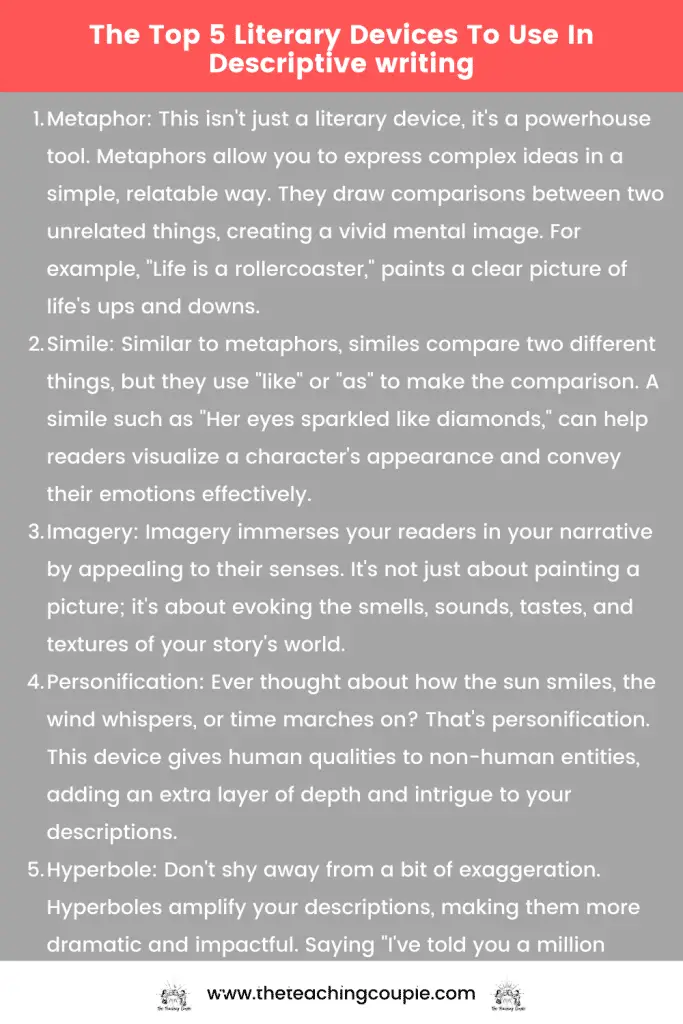
Descriptive Paragraph Example 14:
The desert stretched out before me, a vast expanse of red sand and sun-bleached rocks. The heat was oppressive but calming, the warm breeze carrying an earthy scent. In the distance, I could see dust devils whirling across the dunes, throwing up clouds of golden sand in their wake.
It felt like a place stuck in time, where one could take refuge from the frenetic pace of modern life and find solace in nature.
Descriptive Paragraph Example 15:
The forest was alive with sound and colour; birdsong filled the air while shafts of sunlight pierced through the canopy above, dappling the ground below with splashes of gold.
The trees stood tall and proud, their leaves rustling in the gentle breeze. Everywhere I looked, there was evidence of life; from the scurrying squirrels to the buzzing insects, it seemed as if everything had been frozen in perfect harmony and balance. It was an enchanting sight that made me feel profoundly alive.
Descriptive Paragraph Example 16:
The lake shimmered in the afternoon light, its still waters reflecting the clouds above. The sun shone brightly in a deep blue sky, making everything around me seem alive and vibrant. I could feel the warmth of the sand beneath my feet as I walked along the beach, watching the waves lap against the shoreline.
Everywhere I looked, there was beauty; from the towering mountains on either side to the lush greenery that covered them, it was an idyllic setting that filled my heart with joy.
Descriptive Paragraph Example 17:
The stars twinkled in all their glory above me, casting an ethereal glow over everything below. I stood in awe, my eyes searching the night sky for constellations. The moon shone brightly, its pale light illuminating the darkness and giving everything an otherworldly feel.
It was a breathtaking sight that reminded me of the power and mystery of our universe. Here I could escape from my troubles and bask in the beauty of nature’s grandeur.
Descriptive Paragraph Example 18:
The thunder roared as it rolled across the horizon, creating a rumbling sound that could be felt deep beneath my feet. Lightning crackled above, illuminating the sky with flashes of brilliant white light. The rain poured down in sheets, washing away all traces of dirt and dust from everything it touched.
This violent storm was both awe-inspiring and frightening in its intensity, a reminder of the unpredictability of nature. I felt as though I was witnessing something that could never be recreated; a moment of beauty and power that would stay with me forever.
Descriptive Paragraph Example 19:
The autumn air was crisp and clean, filled with the smell of fallen leaves and freshly cut wood. The last rays of sunlight cast an orange hue over everything, creating an ethereal atmosphere that seemed almost magical.
Everywhere I looked were vibrant red, gold, and orange shades as trees shed their leaves for the winter ahead. It was a beautiful sight that reminded me how quickly time passes and how we must cherish each moment before it slips away. It was a reminder of just how vast and varied our world is.
Descriptive Paragraph Example 20:
The snow fell softly from the sky, blanketing the world in a thick layer of white. C crystalline frost covered trees, and icicles hung from rooftops, their needles glistening in the pale moonlight.
Everything was still and silent; it felt like I was the only living soul for miles. With each breath, the cold air filled my lungs, and I savoured this moment of peace, so pure and untouched by modern life. This was nature at its finest, a reminder of how fragile our existence is.
1. What is descriptive language?
Descriptive language is a literary tool used by writers to paint vivid pictures in the reader’s mind. It involves using adjectives, adverbs, metaphors, similes, and other figurative language to describe a scene, person, or situation in detail.
2. Why is descriptive language important in descriptive paragraphs?
The essence of a descriptive paragraph lies in its ability to create a clear and vivid image in the reader’s mind. Descriptive language is instrumental in achieving this, as it adds depth, detail, and color to your writing, making it more engaging and relatable for your audience.
3. Can you give an example of descriptive language?
Absolutely! Consider this sentence: “The sun set over the ocean.” Now, let’s add some descriptive language: “The fiery sun slowly sank beneath the horizon, casting a golden glow over the tranquil, azure ocean.”
4. How can I improve my use of descriptive language?
Practice makes perfect! Try to incorporate descriptive language into your everyday writing. Read widely to expose yourself to different styles of descriptive writing. Experiment with various literary devices such as metaphors, similes, and personification.
5. Does using more adjectives and adverbs make my writing more descriptive?
Not necessarily. While adjectives and adverbs play a key role in descriptive writing, it’s essential to use them judiciously. Too many can make your writing seem overwrought and confusing. The goal should be clarity and precision.
6. How does descriptive language contribute to the tone of a paragraph?
Descriptive language can significantly influence the tone of a paragraph. For instance, using words like ‘gloomy’, ‘dreary’, or ‘haunting’ can create a dark or melancholic tone, while words like ‘vibrant’, ‘lively’, or ‘sparkling’ can evoke a more upbeat and positive tone.
7. Can descriptive language be used in all types of writing?
While descriptive language is most commonly associated with creative writing, it can be effectively used in almost all types of writing, including academic, business, and online content marketing, to engage readers and make the content more memorable. Remember, mastering descriptive language is a journey. Keep practicing, keep experimenting, and most importantly, keep having fun with your words. After all, isn’t that what writing is all about?
Related Posts

About The Author
I'm Dan Higgins, one of the faces behind The Teaching Couple. With 15 years in the education sector and a decade as a teacher, I've witnessed the highs and lows of school life. Over the years, my passion for supporting fellow teachers and making school more bearable has grown. The Teaching Couple is my platform to share strategies, tips, and insights from my journey. Together, we can shape a better school experience for all.

Join our email list to receive the latest updates.
Add your form here
Search the blog
Input your search keywords and press Enter.

Vibrant Teaching
Teaching Resources Creator and Blogger
Examples of Descriptive Writing Using the 5 Senses

What is Descriptive Writing?
Descriptive writing uses details and the five senses to describe a person, place, thing, or event. Proper word choice and the use of adjectives are very important for the reader to create a picture in their mind. Similes and onomatopoeia (sound words) are some other examples of descriptive writing.
Basic Sentence: The leaf fell off the tree.
Detailed Sentence: The yellow leaf fell off the big tree.
Descriptive Writing: SWOOSH! The smooth yellow leaf floated down from the enormous oak tree.
Using the 5 Senses
Using the five senses is one of the best ways to incorporate descriptive writing. Describing sight, smell, hearing, taste, and touch will enable the reader to envision the words and better understand the writing. Although it may be difficult to use all five senses, even just using a few will enhance the reader’s experience.
Grab your FREE 5 Senses Charts!
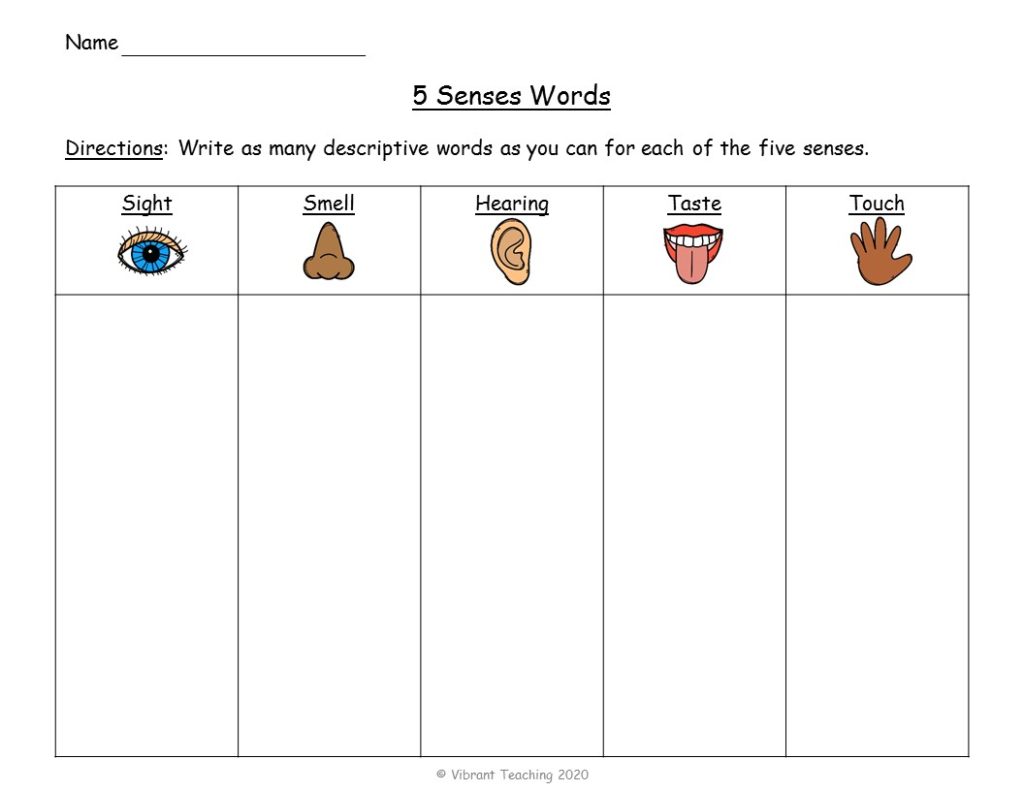
It’s fun to choose one topic and describe it in depth. Look at the list below for some examples of descriptive writing ideas for kids to try.
- Food – pumpkin pie, ice cream, hot chocolate
- Animal – dog, bird, elephant
- Season – winter, spring, summer, fall
- Holiday – Halloween, Thanksgiving, Christmas
- Place – zoo, island, school
- Event – birthday, parade, sporting event
Winter by Mrs. Sutton
Cold harsh wind engulfs me like a tornado.
White fluffy snow falls from the sky.
WHOOSH! The sound of the sled as it races past.
The smell of logs burning in the fireplace.
Sweet hot cocoa hits my tongue.

Autumn is Here by Mrs. Sutton
Bright vibrant red and yellow leaves.
The sound of leaves rustling in the wind.
Cool crisp air surrounds me.
The sweet smell of pumpkin pie as the warmth enters my mouth.
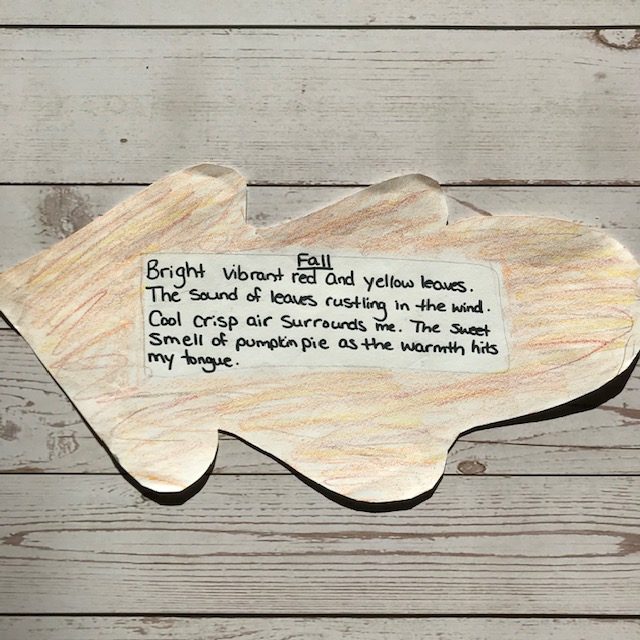
Mentor Texts
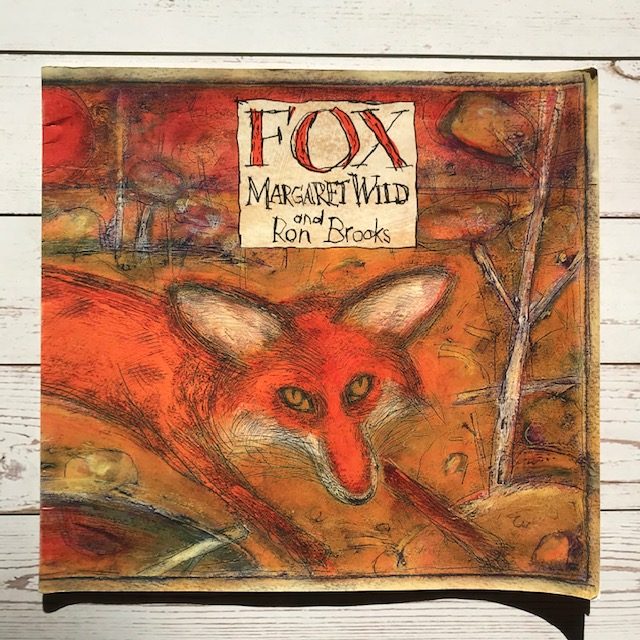
You Might Also Like:
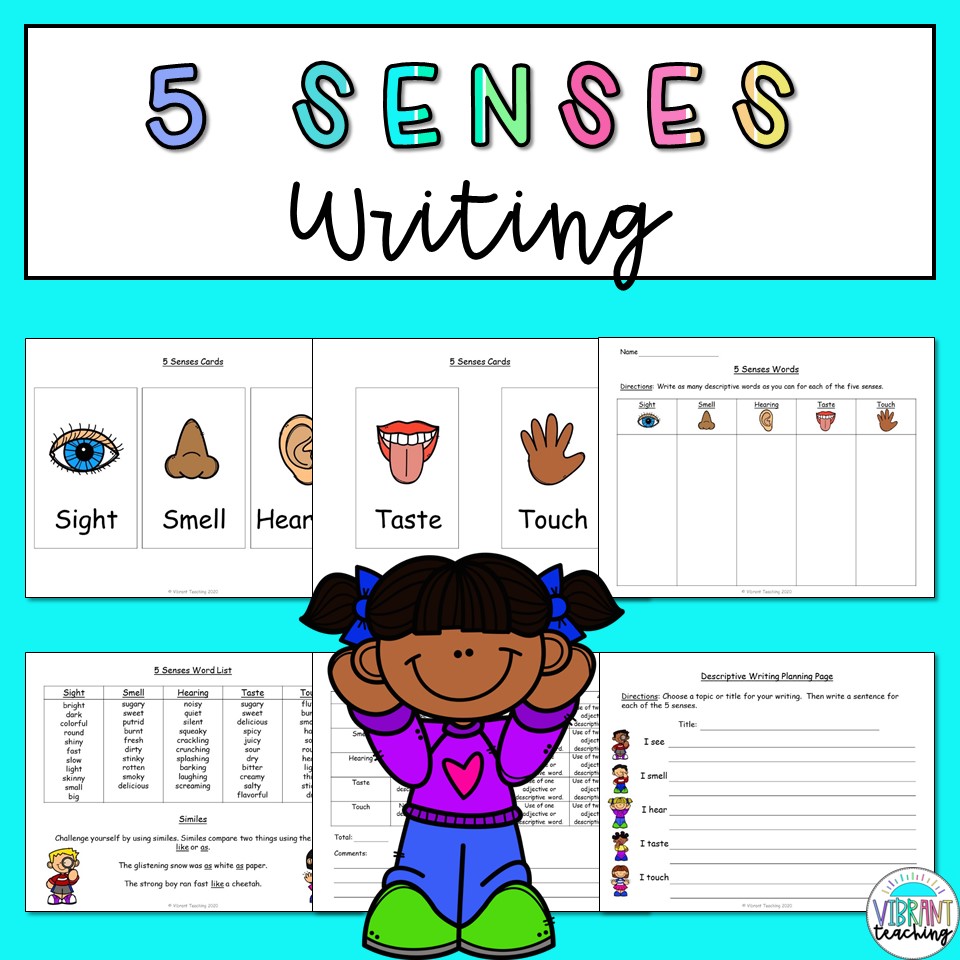
Vibrant Teaching is an Amazon Affiliate and receives a small commission for products purchased through these links. Thanks for your support !
Angela Sutton
Related posts.

Holiday Writing Prompt List to Inspire Kids

20 Prompts for Narrative Writing That Spark Creativity
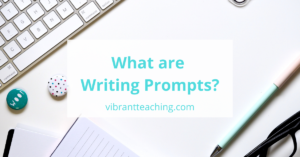
What are Writing Prompts? A Helpful Guide for Teachers
Hi Angela, This article was really helpful for me. Thank you so much for the best resources given.
I’m so glad this information was useful and helpful. I really appreciate your feedback!
Leave a Reply Cancel Reply
I accept the Privacy Policy

I specialize in helping elementary teachers with writing resources, tips, and ideas. My goal is to save teachers time and energy so they can be vibrant inside and outside of the classroom! Read More
SEARCH THE BLOG
Subscribe to our mailing list.
Get the news right in your inbox!
Health and Wellness
5 Examples of How to Write a Good Descriptive Paragraph
Disassemble good writing to see what makes It tick
- Writing Essays
- Writing Research Papers
- English Grammar
- Ph.D., Rhetoric and English, University of Georgia
- M.A., Modern English and American Literature, University of Leicester
- B.A., English, State University of New York
A good descriptive paragraph is like a window into another world. Through the use of careful examples or details, an author can conjure a scene that vividly describes a person, place, or thing. The best descriptive writing appeals to multiple senses at once—smell, sight, taste, touch, and hearing—and is found in both fiction and nonfiction .
In their own way, each of the following writers (three of them students, two of them professional authors) have selected a belonging or a place that holds special meaning to them. After identifying that subject in a clear topic sentence , they proceed to describe it in detail while explaining its personal significance.
"A Friendly Clown"
"On one corner of my dresser sits a smiling toy clown on a tiny unicycle―a gift I received last Christmas from a close friend. The clown's short yellow hair, made of yarn, covers its ears but is parted above the eyes. The blue eyes are outlined in black with thin, dark lashes flowing from the brows. It has cherry-red cheeks, nose, and lips, and its broad grin disappears into the wide, white ruffle around its neck. The clown wears a fluffy, two-tone nylon costume. The left side of the outfit is light blue, and the right side is red. The two colors merge in a dark line that runs down the center of the small outfit. Surrounding its ankles and disguising its long black shoes are big pink bows. The white spokes on the wheels of the unicycle gather in the center and expand to the black tire so that the wheel somewhat resembles the inner half of a grapefruit. The clown and unicycle together stand about a foot high. As a cherished gift from my good friend Tran, this colorful figure greets me with a smile every time I enter my room."
Observe how the writer moves clearly from a description of the head of the clown to the body to the unicycle underneath. More than sensory details for the eyes, she provides touch, in the description that the hair is made of yarn and the suit of nylon. Certain colors are specific, as in cherry-red cheeks and light blue, and descriptions help the reader to visualize the object: the parted hair, the color line on the suit, and the grapefruit analogy. Dimensions overall help to provide the reader with the item's scale, and the descriptions of the size of the ruffle and bows on the shoes in comparison to what's nearby provide telling detail. The concluding sentence helps to tie the paragraph together by emphasizing the personal value of this gift.
"The Blond Guitar"
by Jeremy Burden
"My most valuable possession is an old, slightly warped blond guitar―the first instrument I taught myself how to play. It's nothing fancy, just a Madeira folk guitar, all scuffed and scratched and fingerprinted. At the top is a bramble of copper-wound strings, each one hooked through the eye of a silver tuning key. The strings are stretched down a long, slim neck, its frets tarnished, the wood worn by years of fingers pressing chords and picking notes. The body of the Madeira is shaped like an enormous yellow pear, one that was slightly damaged in shipping. The blond wood has been chipped and gouged to gray, particularly where the pick guard fell off years ago. No, it's not a beautiful instrument, but it still lets me make music, and for that I will always treasure it."
Here, the writer uses a topic sentence to open his paragraph then uses the following sentences to add specific details . The author creates an image for the mind's eye to travel across by describing the parts of the guitar in a logical fashion, from the strings on the head to the worn wood on the body.
He emphasizes its condition by the number of different descriptions of the wear on the guitar, such as noting its slight warp; distinguishing between scuffs and scratches; describing the effect that fingers have had on the instrument by wearing down its neck, tarnishing frets, and leaving prints on the body; listing both its chips and gouges and even noting their effects on the color of the instrument. The author even describes the remnants of missing pieces. After all that, he plainly states his affection for it.
"Gregory"
by Barbara Carter
"Gregory is my beautiful gray Persian cat. He walks with pride and grace, performing a dance of disdain as he slowly lifts and lowers each paw with the delicacy of a ballet dancer. His pride, however, does not extend to his appearance, for he spends most of his time indoors watching television and growing fat. He enjoys TV commercials, especially those for Meow Mix and 9 Lives. His familiarity with cat food commercials has led him to reject generic brands of cat food in favor of only the most expensive brands. Gregory is as finicky about visitors as he is about what he eats, befriending some and repelling others. He may snuggle up against your ankle, begging to be petted, or he may imitate a skunk and stain your favorite trousers. Gregory does not do this to establish his territory, as many cat experts think, but to humiliate me because he is jealous of my friends. After my guests have fled, I look at the old fleabag snoozing and smiling to himself in front of the television set, and I have to forgive him for his obnoxious, but endearing, habits."
The writer here focuses less on the physical appearance of her pet than on the cat's habits and actions. Notice how many different descriptors go into just the sentence about how the cat walks: emotions of pride and disdain and the extended metaphor of the dancer, including the phrases the "dance of disdain," "grace," and "ballet dancer." When you want to portray something through the use of a metaphor, make sure you are consistent, that all the descriptors make sense with that one metaphor. Don't use two different metaphors to describe the same thing, because that makes the image you're trying to portray awkward and convoluted. The consistency adds emphasis and depth to the description.
Personification is an effective literary device for giving lifelike detail to an inanimate object or an animal, and Carter uses it to great effect. Look at how much time she spends on the discussions of what the cat takes pride in (or doesn't) and how it comes across in his attitude, with being finicky and jealous, acting to humiliate by spraying, and just overall behaving obnoxiously. Still, she conveys her clear affection for the cat, something to which many readers can relate.
"The Magic Metal Tube"
by Maxine Hong Kingston
"Once in a long while, four times so far for me, my mother brings out the metal tube that holds her medical diploma. On the tube are gold circles crossed with seven red lines each―"joy" ideographs in abstract. There are also little flowers that look like gears for a gold machine. According to the scraps of labels with Chinese and American addresses, stamps, and postmarks, the family airmailed the can from Hong Kong in 1950. It got crushed in the middle, and whoever tried to peel the labels off stopped because the red and gold paint came off too, leaving silver scratches that rust. Somebody tried to pry the end off before discovering that the tube falls apart. When I open it, the smell of China flies out, a thousand-year-old bat flying heavy-headed out of the Chinese caverns where bats are as white as dust, a smell that comes from long ago, far back in the brain."
This paragraph opens the third chapter of Maxine Hong Kingston's "The Woman Warrior: Memoirs of a Girlhood Among Ghosts," a lyrical account of a Chinese-American girl growing up in California. Notice how Kingston integrates informative and descriptive details in this account of "the metal tube" that holds her mother's diploma from medical school. She uses color, shape, texture (rust, missing paint, pry marks, and scratches), and smell, where she has a particularly strong metaphor that surprises the reader with its distinctness. The last sentence in the paragraph (not reproduced here) is more about the smell; closing the paragraph with this aspect adds emphasis to it. The order of the description is also logical, as the first response to the closed object is how it looks rather than how it smells when opened.

"Inside District School #7, Niagara County, New York"
by Joyce Carol Oates
"Inside, the school smelled smartly of varnish and wood smoke from the potbellied stove. On gloomy days, not unknown in upstate New York in this region south of Lake Ontario and east of Lake Erie, the windows emitted a vague, gauzy light, not much reinforced by ceiling lights. We squinted at the blackboard, that seemed far away since it was on a small platform, where Mrs. Dietz's desk was also positioned, at the front, left of the room. We sat in rows of seats, smallest at the front, largest at the rear, attached at their bases by metal runners, like a toboggan; the wood of these desks seemed beautiful to me, smooth and of the red-burnished hue of horse chestnuts. The floor was bare wooden planks. An American flag hung limply at the far left of the blackboard and above the blackboard, running across the front of the room, designed to draw our eyes to it avidly, worshipfully, were paper squares showing that beautifully shaped script known as Parker Penmanship."
In this paragraph (originally published in "Washington Post Book World" and reprinted in "Faith of a Writer: Life, Craft, Art"), Joyce Carol Oates affectionately describes the one-room schoolhouse she attended from first through fifth grades. Notice how she appeals to our sense of smell before moving on to describe the layout and contents of the room. When you walk into a place, its overall smell hits you immediately, if it's pungent, even before you've taken in the whole area with your eyes. Thus this choice of chronology for this descriptive paragraph is also a logical order of narration, even though it differs from the Hong Kingston paragraph. It allows the reader to imagine the room just as if he were walking into it.
The positioning of items in relation to other items is on full display in this paragraph, to give people a clear vision of the layout of the place as a whole. For the objects inside, she uses many descriptors of what materials they are made from. Note the imagery portrayed by the use of the phrases "gauzy light," "toboggan," and "horse chestnuts." You can imagine the emphasis placed on penmanship study by the description of their quantity, the deliberate location of the paper squares, and the desired effect upon the students brought about by this location.
- Kingston, Maxine Hong. The Woman Warrior: Memoirs of a Girlhood Among Ghosts. Vintage, 1989.
- Oates, Joyce Carol. The Faith of a Writer: Life, Craft, Art. HarperCollins e-books, 2009.
- Practice in Supporting a Topic Sentence with Specific Details
- How to Write a Descriptive Paragraph
- Definition and Examples of Agreement in English Grammar
- 40 Topics to Help With Descriptive Writing Assignments
- 42 Must-Read Feminist Female Authors
- Maxine Hong Kingston’s "The Woman Warrior"
- Writing Descriptive Paragraphs
- How to Write Interesting and Effective Dialogue
- How to Write a Narrative Essay or Speech
- detail (composition)
- Description in Rhetoric and Composition
- How to Write a Great Book Report
- 5 Key Ingredients for Great Feature Stories
- How to Write an Abstract for a Scientific Paper
- How to Write a Personal Narrative
- How to Structure an Essay
Descriptive Writing
Here’s a huge variety of resources on descriptive writing: lesson ideas, graphic organizers, worksheets, and practice pages for book reports, how-to, science, and explanatory writing. Plus, activities for selecting sensory words, adjectives, adverbs, and interesting synonyms.
TRY US RISK-FREE FOR 30 DAYS!
ADD TO YOUR FILE CABINET
THIS RESOURCE IS IN PDF FORMAT
Printable Details
- Number of pages:
- Guided Reading Level:
- Common Core:
Descriptive Writing Examples: A Guide to Mastering the Art of Description

Imagine an article so teeming with life that it seems sentient.
As you consume its words, it seizes your attention and transports you to a world where scaly dragons slice through the sky as sharply as the knight’s blade that threatens their existence.
Okay, this post may not be that invigorating, but let’s see how we can bring our words to life through descriptive writing….
The Draw of Descriptive Writing
Descriptive writing is a powerful tool that enables you to create vivid images in your reader’s mind.
When you use figurative language and sensory details, it creates an immersive experience for your readers, drawing them into your narrative more fully.
The use of metaphors, for example, helps you illustrate similarities in ways that are easily understood:
“Her eyes were radiant stars in the night sky.”
Beyond using metapors, descriptive writing highlights emotion, describing it in fine detail.
You can evoke emotion through the reactions of your characters and the atmosphere you create.
Instead of stating that a character is sad, describe their trembling lip, downcast eyes, or the heavy weight on their shoulders.
Incorporate figurative language, such as similes and personification, to convey more depth in your descriptions.
Similes make explicit comparisons:
“The leaves rustled like whispers in the night.”
Personification attributes human characteristics to non-human things:
“The wind howled in frustration.”
Engage your reader’s senses by describing not only how things look but also how they sound, feel, taste, and smell.
For instance:
- describe the warmth of a crackling fireplace,
- the aroma of freshly baked bread,
- or the sound of rain beating against the window.
Finally, include specific sensory details so that your reader can easily envision what you’re trying to describe. Instead of simply stating that a room was messy, describe the piles of clothes on the floor, the papers strewn about, and the half-empty coffee mugs on the cluttered desk.
By combining these elements in your descriptive writing, you’ll create a rich and engaging experience that will captivate your readers and leave lasting impressions.
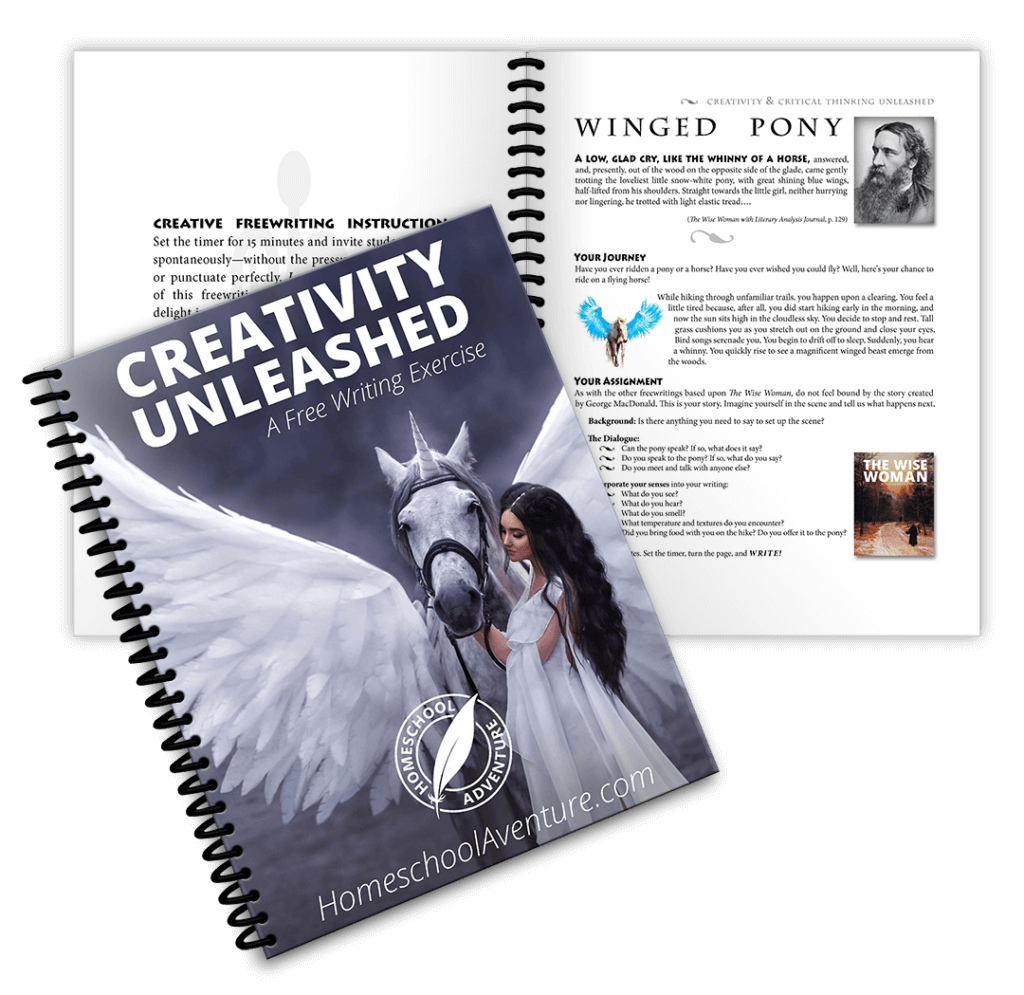
Get a free writing exercise (includes prompts)!
Key elements of descriptive writing.
First, provide a clear setting . Inform your readers of the location and time period of your scene.
Whether you’re describing a busy city street or a serene forest, give a clear context that allows your readers to immerse themselves within the locale.
Make sure to address the surroundings and any relevant objects that contribute to the setting.
Next, organize your description in a logical order . Guide your reader through the scene by providing a clear sequencing of events, objects, or characters.
This can be done chronologically, spatially, or in order of importance to the story.
Having a clear flow of information ensures that your reader can easily follow the narrative—without getting lost in the details.
Lastly, it’s important to be clear and concise throughout the writing process. Being detailed doesn’t mean being overly wordy.
Efficiently and effectively convey your message to the reader.
Remember to keep the focus on the scene, setting, and characters, and avoid inserting unnecessary opinions or judgments.
A consistent and informative tone allows your reader to fully appreciate and understand your writing.
The Role of Language Selection
When writing descriptive paragraphs , the use of various linguistic devices helps paint a vivid picture in the reader’s mind.
Let’s explore how some of these devices can enhance your writing.
Adjectives enrich your writing by adding details and depth to nouns. Be intentional with the choice of your adjectives. Opt for compelling descriptors to create a lasting impression.
Verdant has more pizazz than green , don’t you think?
Verbs and adverbs give life and movement to your writing.
Avoid repetition, and be precise with your verb or adverb word choice. Instead of saying “walked slowly,” you could use “sauntered” or “strolled.”
Include specific details that help your reader perceive a scene exactly as you do. It might be the texture of a fabric, a particular smell, or the way light reflects off a surface.
Opt for expressive terms, and utilize devices such as metaphors and personification to create strong mental images.
Lastly, onomatopoeia is a useful tool in descriptive writing, involving words that represent sounds, such as “buzz,” “sizzle,” or “whisper.”
They help aurally immerse your readers in the scene and make the experience more engaging.
Remember, it’s essential to balance these language features to effectively maintain your reader’s interest.
3 Examples of Descriptive Writing
1. descriptive writing sample about a place.
Imagine you’re walking through an enchanting forest. The sunlight filters through the dense canopy, casting dappled shadows on the soft, mossy ground.
Surrounding you, tall trees stretch towards the sky, their bark rough and gnarled, providing a home for scurrying beetles. A gentle breeze brings the scent of fresh pine and damp earth, stirring your senses and enveloping you in the forest’s calming embrace.
As you continue further, a babbling brook emerges, its crystal-clear water reflecting the sky above. The tranquil sound of the water brings a sense of serenity to the enchanted forest.
2. Descriptive Writing Sample About a Person
Consider a grandmother you know—someone whose face has been etched with the wisdom of a long life. Her once-dark hair—now a silver cascade—frames her face, showcasing the crinkles around her worn, yet joy-filled eyes.
Her hands, strong and calloused from decades of hard work, are nevertheless gentle, cradling a grandchild or cupping the cheek of a loved one.
When she speaks, her voice is like the rustling of leaves, soft yet strong, exuding age, wisdom, and a hint of mischievous humor.
Her smile is a treasure that spreads warmth to everyone she encounters.
3. Descriptive Writing Sample About Emotion
Imagine the sensation of excitement—that fluttering in your stomach as your heart races. It’s as if electricity buzzes beneath your skin.
Your hands tremble slightly as your breathing intensifies. Your thoughts race, jumping from one subject to another as a smile spreads across your face.
It’s a contagious feeling that spreads like a wave, refreshing those around you.
Did these short samples help you better understand descriptive writing? Now it’s your turn! Practice with this free creative writing exercise:
If you have an elementary-aged student, try these creative writing topics to get him or her started.
Frequently Asked Questions
How can i improve my descriptive writing skills.
To improve your descriptive writing skills, practice is essential. Write regularly, describing various objects, settings, and people.
Also, study examples of descriptive writing to analyze how other authors create vivid imagery. Experiment with various literary devices, such as similes, metaphors, and personification. Remember, it’s okay—even highly recommended—to revise your work and refine your descriptions.
What are some techniques used in descriptive writing?
Some common techniques used in descriptive writing include:
- Imagery : Use vivid language to create mental images that help readers visualize the subject.
- Sensory details : Engage the reader’s senses (sight, sound, smell, taste, touch) by providing specific details.
- Similes and metaphors : These comparisons help readers understand complex subjects by comparing them to familiar, simpler objects.
- Personification : Bring stories to life by giving human characteristics to non-human objects.
- Precise language : Use clear and accurate words to describe the subject effectively.
- Varied sentence structure : Mix short and long sentences to maintain the reader’s interest and provide a natural flow to your writing.
How does descriptive writing differ between grade levels?
Descriptive writing expectations change as students progress through grade levels:
- Elementary grades : At younger ages, students are encouraged to use simple, familiar language to describe objects, scenes, and characters. They should focus on basic descriptive techniques such as adjectives and sensory details. Consider picture-based writing prompts for this age group.
- Middle grades : As students advance, they begin to incorporate more complex language, literary devices, and varied sentence structures. They also start to tailor their descriptions to their audience and purpose.
- High school : High school students refine their descriptive writing skills by using more sophisticated vocabulary, creating nuanced images, and developing their personal writing style. They are expected to demonstrate a mastery of descriptive techniques and employ them effectively across various writing genres.
About The Author
Jordan Mitchell
Descriptive Essay Writing
Descriptive Essay Examples

Amazing Descriptive Essay Examples for Your Help
Published on: Jun 21, 2023
Last updated on: Mar 1, 2024
-8521.jpg)
People also read
Interesting Descriptive Essay Topics - 2024
Writing a Descriptive Essay Outline - Tips & Examples
Descriptive Essay: Definition, Tips & Examples
Share this article
Descriptive essays are very commonly assigned essays. This type of essay enhances students' writing skills and allows them to think critically.
A descriptive essay is often referred to as the parent essay type. Other essays like argumentative essays, narrative essays, and expository essays fall into descriptive essays. Also, this essay helps the student enhance their ability to imagine the whole scene in mind by appealing senses.
It is assigned to high school students and all other students at different academic levels. Students make use of the human senses like touch, smell, etc., to make the descriptive essay more engaging for the readers.
On This Page On This Page -->
Examples make it easy for readers to understand things in a better way. Also, in a descriptive essay, different types of descriptions can be discussed.
Here are some amazing examples of a descriptive essay to make the concept easier for you.
Descriptive Essay Example 5 Paragraph
5 paragraphs essay writing format is the most common method of composing an essay. This format has 5 paragraphs in total. The sequence of the paragraphs is as follows;
- Introduction
- Body Paragraph 1
- Body Paragraph 2
- Body Paragraph 3
- Conclusion
Following is an example of a descriptive essay written using the famous 5 paragraph method.
5 Paragraph Descriptive Essay

Get More Examples From Our AI Essay Writer
Descriptive Essay Example About A Person
Descriptive essays are the best option when it comes to describing and writing about a person. A descriptive essay is written using the five human senses. It helps in creating a vivid image in the readerâs mind and understanding what the writer is trying to convey.
Here is one of the best descriptive essay examples about a person. Read it thoroughly and try to understand how a good descriptive essay is written on someoneâs personality.
Descriptive Essay Example About a Person
Descriptive Essay Example About A Place
If you have visited a good holiday spot or any other place and want to let your friends know about it. A descriptive essay can help you explain every detail and moment you had at that place.
Here is one of the good descriptive essay examples about a place. Use it as a sample and learn how you can write such an essay.

Tough Essay Due? Hire Tough Writers!
Descriptive Essay Example for Grade 6
Descriptive essays are frequently assigned to school students. This type of essay helps the students enhance their writing skills and helps them see things in a more analytical way.
If you are a 6 grader and looking for a good descriptive essay example, you are in the right place.
Descriptive Essay Example for Grade 7
Here is one of the best descriptive essay examples for grade 7.
Descriptive Essay Example for Grade 8
If you are looking for some amazing descriptive essay examples for grade 8, you have already found one. Look at the given example and see what a well-written descriptive essay looks like.
Descriptive Essay Example for Grade 10
Essay writing is an inevitable part of a student's academic life . No matter your grade, you will get to write some sort of essay at least once.
Here is an example of a descriptive essay writing for grade10. If you are also a student of this grade, this example might help you to complete your assignment.
Descriptive Essay Example for Grade 12
If you are a senior student and looking for some essay examples, you are exactly where you should be.
Use the below-mentioned example and learn how to write a good essay according to the instructions given to you.
Descriptive Essay Example College
Descriptive essays are a great way to teach students how they can become better writers. Writing a descriptive essay encourages them to see the world more analytically.
Below is an example that will help you and make your writing process easy.
College Descriptive Essay Example
Descriptive Essay Example for University
Descriptive essays are assigned to students at all academic levels. University students are also assigned descriptive essay writing assignments. As they are students of higher educational levels, they are often given a bit of difficult and more descriptive topics.
See the example below and know what a descriptive essay at the university level looks like.
Short Descriptive Essay Example
Every time a descriptive essay isn't written in detail. It depends on the topic of how long the essay will be.
For instance, look at one of the short descriptive essay examples given below. See how the writer has conveyed the concept in a composed way.
Objective Descriptive Essay Example
When writing an objective description essay, you focus on describing the object without conveying your emotions, feelings, or personal reactions. The writer uses sight, sound, or touch for readers' minds to bring life into pictures that were painted by words.
Here is an example that you can use for your help.
Narrative and Descriptive Essay Example
A narrative descriptive essay can be a great way to share your experiences with others. It is a story that teaches a lesson you have learned. The following is an example of a perfect narrative descriptive essay to help you get started.
Paper Due? Why Suffer? That's our Job!
How to Start a Descriptive Essay? - Example
If you don't know how to start your descriptive essay, check this example and create a perfect one.
How to Start a Descriptive Essay - Example
Subjective Descriptive Essay Example
It is a common concept that a descriptive essay revolves around one subject. Be it a place, person, event, or any other object you can think of.
Following is one of the subjective descriptive, easy examples. Use it as a guide to writing an effective descriptive essay yourself.
Writing a descriptive essay is a time-consuming yet tricky task. It needs some very strong writing, analytical, and critical thinking skills. Also, this is a type of essay that a student can not avoid and bypass.
But if you think wisely, work smart, and stay calm, you can get over it easily. Learn how to write a descriptive essay from a short guide given below.
How to Write a Descriptive Essay?
A writer writes a descriptive essay from their knowledge and imaginative mind. In this essay, the writer describes what he has seen or experienced, or ever heard from someone. For a descriptive essay, it is important to stay focused on one point. Also, the writer should use figurative language so that the reader can imagine the situation in mind.
The following are some very basic yet important steps that can help you write an amazing descriptive essay easily.
- Choose a Topic
For a descriptive essay, you must choose a vast topic to allow you to express yourself freely. Also, make sure that the topic you choose is not overdone. An overdone will not grab the attention of your intended audience. Check out our descriptive essay topics blog for a variety of intriguing topic suggestions.
- Create a Strong Thesis Statement
A thesis statement is the essence of any academic writing. When you select the descriptive essay topic, then you create a strong thesis statement for your essay.
A thesis statement is a sentence or two that explains the whole idea of your essay to the reader. It is stated in the introductory paragraph of the essay. The word choice for creating the thesis statement must be very expressive, composed, and meaningful. Also, use vivid language for the thesis statement.
- Collect the Necessary Information
Once you have created the thesis statement and are done writing your essay introduction . Now, it's time to move toward the body paragraphs.
Collect all necessary information related to your topic. You would be adding this information to your essay to support your thesis statement. Make sure that you collect information from authentic sources.
To enhance your essay, make use of some adjectives and adverbs. To make your descriptive essay more vivid, try to incorporate sensory details like touch, taste, sight, and smell.
- Create a Descriptive Essay Outline
An outline is yet another necessary element of your college essay. By reading the descriptive essay outline , the reader feels a sense of logic and a guide for the essay.
In the outline, you need to write an introduction, thesis statement, body paragraphs and end up with a formal conclusion.
Proofreading is a simple procedure in which the writer revises the written essay. This is done in order to rectify the document for any kind of spelling or grammatical mistakes. Thus, proofreading makes high-quality content and gives a professional touch to it.
You might be uncertain about writing a good enough descriptive essay and impress your teacher. However, it is very common, so you do not need to stress out.
Hit us up at CollegeEssay.org and get an essay written by our professional descriptive essay writers. Our essay writing service for students aims to help clients in every way possible and ease their stress. Get in touch with our customer support team, and they will take care of all your queries related to your writing.
You can always enhance your writing skills by leveraging the power of our AI essay writing tools .
Place your order now and let all your stress go away in a blink!
Barbara P (Literature)
Barbara is a highly educated and qualified author with a Ph.D. in public health from an Ivy League university. She has spent a significant amount of time working in the medical field, conducting a thorough study on a variety of health issues. Her work has been published in several major publications.
Paper Due? Why Suffer? That’s our Job!

Keep reading

- Privacy Policy
- Cookies Policy
- Terms of Use
- Refunds & Cancellations
- Our Writers
- Success Stories
- Our Guarantees
- Affiliate Program
- Referral Program
- AI Essay Writer
Disclaimer: All client orders are completed by our team of highly qualified human writers. The essays and papers provided by us are not to be used for submission but rather as learning models only.
Descriptive Essay
Descriptive Essay Writing
Last updated on: Feb 9, 2023
How To Write An Impactful Descriptive Essay?
By: Cathy A.
12 min read
Reviewed By: Melisa C.
Published on: Dec 17, 2019

Wondering how to write an impressive descriptive essay? Writing a descriptive essay is both fun and challenging. You need to describe the main topic in detail and by engaging the five senses of the readers.
Students usually get this type of essay in high school and college. Writing a descriptive essay is different from other essays.
You need to focus on describing a certain person, place, or event.
Luckily for you, the following blog post will provide some helpful tips on how to create an engaging essay.
Continue reading to learn how to write an A-worthy descriptive essay.

On this Page
What is a Descriptive Essay?
A descriptive essay is a detailed paper that describes a place, person, situation, object, or emotion. Different people have different points of view and your job is to explain yours in detail.
You may be asked to write a descriptive essay about the beach or forest or about a person or situation. The purpose of this essay is to test the writer’s ability in expressing and explaining their experiences.
Descriptive writing should create a picture in the reader’s mind. You may be required to write a descriptive essay as a high school or college essay assignment.
For a compelling essay, using adjectives and adverbs, details, and figurative language is fundamental. Without proper usage of words, you will not be able to invoke the readers' emotions.
What is the Purpose of a Descriptive Essay?
The purpose of a descriptive essay is to describe a person, place, or personal experience in vivid detail so that the reader can create a picture in his mind.
The descriptive essay is written to get the reader to understand by using descriptive language. It is different from narrative essays, where the writer tells the story about someone else. Usually, it starts with a real-life event and then the content follows the author's imagination.
Descriptive essays are not intended to persuade the reader or show facts and figures to prove something. Descriptive essays are like word paintings that contain personal and descriptive details and these are mostly assigned to students of creative writing.
How to Start a Descriptive Essay
A strong start for your descriptive essay is essential. Analyze your topic from every angle and document the following details:
Analyze the main subjects in detail and observe minute things.
- Start with observing all the possible aspects of the subject.
- Don't just observe the object but also its surroundings.
- Focus on details and features of the subject and develop opinions about them.
- Be thoughtful; this first step will be the basis for the essay.
Physical Settings
Describing the physical settings is a must in a descriptive essay. When describing, keep the following points in mind.
- Focus on the subject's position and observe nearby objects
- Note the time of day and kind of lighting: natural or imitated
- Physical settings: all the basic and decorative elements
- The position and shape of the objects
- Alignment and any other observable information
Physical Features
When describing the physical features of the subject, living or nonliving, consider the following points.
- Living or nonliving; describe the features in detail
- The subject's skin color, texture, smoothness, expression, and age
- The features of inanimate objects in the picture, color, surface, and texture
Create Drama
Storytelling and drama are the life and blood of a good descriptive essay. It turns your essay into an exciting and interesting piece of writing. However, be subtle about adding drama to your sentence structure and add it to complement your story only.
Focus On Your Feelings
Focus on how you feel about the particular topic or person and stick to it. It is easy to get involved when working on the essay. But, focus on your own feelings and write an essay based on them.
Use Of Specific Vocabulary
Vocabulary is important. Select the best words for describing an action or object. Don't always use the first word that comes to mind.
Write slowly and thoughtfully, and use specific words to convey your thoughts.
Psychological Aspects
Writing about a certain situation or behavior of a person focuses on the mental aspects and emotions involved in them.
For Example, describe your emotions when your friend misplaced your notes right before the exam.
You may have had several emotions in that incident. Maybe you were prepared for exams, but this situation put you under pressure and made you feel frustrated and hurt.
Explore those emotions and describe the feelings they aroused. Describe the body language also, if relevant.
Ask Yourself, WHY?
This is the most valuable tip for students. When you are looking at a particular subject, and having difficulty analyzing its aspects, ask yourself "WHY".
- Why is the subject the way it is?
- Why does the person you are describing have such a deep-set and cold eyes?
- Why is the animal so wounded and terrified?
- Why is this particular place famous?
It is a good practice and after some time you will do it naturally. Knowing the why is important if you want to describe your topic properly.

Paper Due? Why Suffer? That's our Job!
How To Write A Descriptive Essay?
When you write a descriptive essay, you help your readers visualize an event, a person, or a story. It is written to make your readers feel what you feel about the respective subject.
A descriptive essay seeks to appeal to some or all of the audience’s five senses. Some key things to consider are:
- Discussing your subject thoroughly
- Focusing on details and adding them in your essay
- Sharing your personal feelings and experience about the subject
- Observing and describing all sensory details of your subject
Here are the steps to write a descriptive essay easily.
1- Choose an Engaging and Focused Essay Topic
An important step that all strong descriptive essays share is having a focused topic. Before you make the outline, identify the purpose of your essay and use it to create an appropriate thesis statement.This type of paper does not require much personal opinion from you. Its main goal should be focusing on information that will make a dominant impression in readers' minds instead.
2- Research and Gather Important Details
When writing a descriptive essay, it is important to make sure you include as many details and sensory information as possible. This helps your reader fully understand the images that are being presented in their mind's eye.You can organize these ideas into categories so they're easy for you to access when needed.
3- Create an Outline of Your Essay
Your essays must be organized by having subheadings that are clear and concise. Group your main points into individual body paragraphs, each of which should only cover one idea or topic at a time.
4- Write your Essay’s Introduction
A good introductory paragraph is much like a road map because it provides direction to your readers.
It provides relevant background information before diving into more specific details related to how something works or why something happens. These could include statistics or stories from real-life scenarios.
5- Write the Main Body Section of Your Essay
Each body paragraph should start with a topic sentence that keeps the reader hooked on what you are saying. Use specific details instead of making generalized statements, and make sure to give examples if necessary.
6- End with a Strong Conclusion
The conclusion of an essay is the final paragraph, and it should summarize all that you have said throughout. It's a good idea to restate the main points and key details from the essay in this section.
It is important so the reader has everything they need for better understanding before ending off on something new.
If necessary be sure not to introduce anything odd or unusual, to avoid any confusion.
7- Proofread and Revise the Essay Carefully
Once you are done writing the essay, proofread and revise it carefully. Make sure that it is free from all kinds of errors.
Descriptive Essay Outline
Like all the other essays, a descriptive essay also follows the usual 5-paragraph essay structure and format.Before starting, it is important to create an outline. Following are the fundamental elements of your descriptive essay outline:
Descriptive Essay Introduction
The introduction sets the footing for the entire essay. Before heading towards the body section, the reader will come across the introduction.
It is the first impression of your work. It is very important to write an engaging introduction so that the readers read the essay till the end.
Start the essay in an easy-to-understand way and language. Provide background information on your topic so they can understand it and its importance.
To make sure the reader feels your emotions and decides to continue reading further, incorporate the following points in your introduction.
The following tips will guide you on how to write a good introduction for a descriptive essay.
- Attract the reader's attention with an interesting fact, phrase, or quote
- Don't bombard them with information
- Go straight to the main pointsInclude enough information to introduce the topic and its significance.
- Summarize the argument and the main topic and craft your thesis statement
Descriptive Essay Thesis Statement
A thesis statement is an integral part of your essay. It focuses on the argument and the writer’s main idea, which is to be discussed in the essay.
This statement also provides the writer with a chance of explaining the purpose and scope of the topic. It is intriguing and engaging.
A thesis statement is written at the end of the introduction, it is mainly a single sentence that describes the essay objective. The thesis statement should act as a guide to the reader on what to expect in the essay body. It is like a table of contents of a book, to the reader on contents you will get an idea of what the book is all about so you get to understand it better.
It is like a table of contents of a book. By reading it, you will get an idea of what the book is all about.
A good thesis should contain the following things:
- Define the essay scope - it should narrow down all the points to clarify its purpose.
- Avoid using common words - you should be creative with your choice of words.
- Create suspense - it should attract the reader to the body paragraphs of the essay.
For further information on how to write a thesis for a descriptive essay, check out the following examples.
- Descriptive essay example about a Place
“Even though monarchy is long gone, Buckingham Palace is here to remind us of the aesthetic beauty of that era.”
- Descriptive essay example about a Person
“One of the characteristics of Spider-Man is his youthfulness, and the fact that he talks to himself more than Hamlet.”
- Descriptive essay example about an Emotion
“For numerous reasons, the dark forest is my greatest fear, though not a fear which is necessarily smart to face.”
Descriptive Essay Body Paragraphs
Body paragraphs of the essay come next after the introduction and thesis statement. It is the main part that continues your essay.
Usually, an essay consists of three body paragraphs but you can add more if needed.
Don't add more than one central idea in one paragraph. Fusing different ideas will confuse the reader.
Build your paragraphs according to the thesis and introduction.
- Start each body paragraph with the main sentence
- Use transitions to move between paragraphs smoothly
- Each paragraph should be five to six sentences long
Descriptive Essay Conclusion
The concluding paragraph is the last part of an essay, and probably your last chance to impress your reader.
The last part that the reader can keep in mind is the conclusion, which is as important as the rest of the essay.
To make it interesting and thought-provoking, include the following points:
- Restate the thesis statement
- Summarize the main points
- Add an intriguing closing statement
After writing the conclusion, make a review of your essay, identify the mistakes and maintain a good tone throughout the essay.
Descriptive Essay Format Sample
Here is the descriptive essay format to help you understand how you can write a winning descriptive essay.
DESCRIPTIVE ESSAY FORMAT (PDF)
Tough Essay Due? Hire Tough Writers!
Descriptive Essay Topics Ideas
Descriptive essay topics are often related to physical settings, locations, living beings, and objects.
Make sure that your essay includes the five senses, touch, taste, smell, sight, hearing, or at least one of them. It depends on the topic and the kind of feeling that you want to arouse.
Below are some descriptive essay ideas and ways to achieve them.
Living Beings
When you want to write about a person like a family member, consider the following elements:
- Gender, age, complexion, and expressions
- Physical features
- Height, body type, and approximate weight
- Kind of clothes
These details will add depth to the description and your readers will actually see your narrative.
When animals are the subject, you can add the above points plus the following details:
- Species and animal
- Size, weight, color
- Behavior patterns
- Temperament
- Trained or wild?
- Real or fictional?
Inanimate Subjects
Geographic locations and structures.
When your subject is a place or a building, add the following points:
- Research about the place and its historical background
- The color and the building's type
- A famous place or landmark to draw a comparison and inspire interest
Human behavior and psychology is a compelling descriptive essay subject. When writing about it:
- Describe the consequences of a particular behavior
- Discuss the emotional dimension of the topic and how you perceive it personally
Event Or Travel Experience
A travel experience makes a good descriptive essay since you have experienced the event first hand.
Give a detailed description of the place, people at the venue, and the atmosphere of the location.
Idea, Concept, or Occupation
When writing on such topics, focus on how an idea or concept affects society and its different aspects.
Example Descriptive Essay Topics for Students
Choosing a topic for your descriptive essay is quite interesting. You get to choose something that you have an emotional connection with.
When writing a descriptive essay about a person or place, adding their personal traits will be helpful.
Some examples of descriptive essay topics include:
- Compose a detailed descriptive essay about your best friend.
- Describe a fancy place that you have created.
- Describe your dream vacation destination.
- Describe your favorite mall or store.
- Describe your childhood home.
- Descriptive essay about nature.
- Descriptive essay about a place you visited.
- Describe the personality of your Maths teacher.
- Discuss the main characters of your favorite movie.
- Descriptive essay about chocolate.
- Write an essay using unique Words to describe yourself.
- What makes me unique?
- My first love.
Descriptive Essay Examples
Study these descriptive essay examples and sample papers to understand the main idea, structure, and purpose of descriptive essays.
DESCRIPTIVE ESSAY ON MARKET (PDF)
DESCRIPTIVE ESSAY EXAMPLE PERSON (PDF)
To help you understand how to write a great descriptive essay, we have a whole blog post dedicated to it. We know that talking about something is one thing and demonstrating it is completely different.
Having a descriptive essay assignment with a short deadline? Looking for someone to do my essay for me ?
5StarEssays.com academic writing professionals are ready to help you. They read the essay details before writing and make sure that they incorporate all the details in it.
Get 100% plagiarism-free content at affordable prices from our experts now!
Frequently Asked Questions
What are the features of a descriptive essay.
A descriptive essay provides a perfect opportunity for writers to express their feelings on any subject. Descriptive writing has rich sensory details which appeal to all of your senses.
How do you start a descriptive essay introduction?
The introduction to the descriptive essay should set the scene and introduce the main topic. You can use these sensory details to get a sense of what the essay is all about.
What are the two types of descriptive essays?
There are two types of descriptive essays. The first type deals with people, and the second one is about objects.
What are the elements of a descriptive essay?
Here are the key elements of a descriptive essay.
- Sensory details
- Figurative language
- Central and main theme
- Precise and clear language
- Proper organization of ideas
What makes good descriptive writing?
Good and effective descriptive writing consists of vivid sensory details that appeal to all senses including the sense of sight, smell, touch, hearing, and taste. Moreover, these essays also explain people’s feelings in writing.

Finance Essay, Literature
Cathy has been been working as an author on our platform for over five years now. She has a Masters degree in mass communication and is well-versed in the art of writing. Cathy is a professional who takes her work seriously and is widely appreciated by clients for her excellent writing skills.
Was This Blog Helpful?
Keep reading.
- Interesting Descriptive Essay Topics Recommended by Experts

- Descriptive Essay Examples - 8 Examples To Help You Write Better

People Also Read
- apa vs mla format
- obesity essay writing topics
- how to write a hypothesis
- analytical essay example
- illustration essay topics
Burdened With Assignments?

Advertisement
- Homework Services: Essay Topics Generator
© 2024 - All rights reserved

IMAGES
VIDEO
COMMENTS
Also Read: Descriptive Writing Class 9 . Examples Of Descriptive Writing Topics For Class 7: Example 1: A description of a beach. Introduction: A beach is a place that is loved by many. It is a place where you can relax, soak up the sun, and enjoy the sound of the waves crashing against the shore. Body Paragraphs:
Descriptive Paragraph Example 20: The snow fell softly from the sky, blanketing the world in a thick layer of white. C crystalline frost covered trees, and icicles hung from rooftops, their needles glistening in the pale moonlight. Everything was still and silent; it felt like I was the only living soul for miles.
Descriptive writing helps the reader visualize the person, place, thing, or situation being described. When a text conjures a vivid, sensory impression in the reader's mind, not only does it make the writing more interesting to read; it helps the reader understand the text better and recognize the author's intention more clearly.
Descriptive writing uses details and the five senses to describe a person, place, thing, or event. Proper word choice and the use of adjectives are very important for the reader to create a picture in their mind. Similes and onomatopoeia (sound words) are some other examples of descriptive writing. Basic Sentence: The leaf fell off the tree.
Descriptive writing is writing in which the author's intent is to create a vivid image of what he/she is describing in the mind of the reader. It relies on the author using detailed descriptions ...
Descriptive Essay Format. A descriptive essay should have three parts: beginning (introduction), middle (body), and end (conclusion). The total number of paragraphs may vary. Introduction: Get the ...
Exercise 1. Decide on an everyday action, say 'making a pot of coffee' and write about it in a descriptive manner. Give yourself 3 words that you're not allowed to use while writing about it. You'll see yourself reaching for the thesaurus, which will help improve your vocabulary. Exercise 2.
Spark your students' interest with these 100 7th grade expository writing prompts, including compare and contrast prompts, descriptive writing ideas, and more. ... descriptive writing ideas, and more. Dictionary Thesaurus Sentences Grammar Vocabulary Usage Reading & Writing Articles Vocabulary; Usage ...
A good descriptive paragraph is like a window into another world. Through the use of careful examples or details, an author can conjure a scene that vividly describes a person, place, or thing. The best descriptive writing appeals to multiple senses at once—smell, sight, taste, touch, and hearing—and is found in both fiction and nonfiction .
Tips for writing descriptively. The key to writing an effective descriptive essay is to find ways of bringing your subject to life for the reader. You're not limited to providing a literal description as you would be in more formal essay types. Make use of figurative language, sensory details, and strong word choices to create a memorable ...
Using specific details helps the reader to create a picture in their mind. Think about the ideas that you need to include in your writing to help the reader imagine the scene. Start by using sensory details such as seeing, hearing, touching, tasting, and smelling. Choose 1 of the prompts below and write for about 20 minutes or more.
Here's a huge variety of resources on descriptive writing: lesson ideas, graphic organizers, worksheets, and practice pages for book reports, how-to, science, and explanatory writing. Plus, activities for selecting sensory words, adjectives, adverbs, and interesting synonyms. Scholastic Teachables— worksheets, lesson plans, learning games ...
3. Make an outline. Your descriptive writing must be organized. Group your main points into individual body paragraphs, each of which should be a subcategory of your essay's main topic. 4. Write the introductory paragraph. A good introductory paragraph can be a road map for your entire essay.
Descriptive writing is a powerful tool that enables you to create vivid images in your reader's mind. When you use figurative language and sensory details, it creates an immersive experience for your readers, drawing them into your narrative more fully. The use of metaphors, for example, helps you illustrate similarities in ways that are ...
Descriptive Essay Topics: Place. Describe your favorite place. Describe your ideal bedroom. Describe the house in which you grew up. Describe what the first house on the moon would look like. Describe some of your favorite places in your hometown. Describe a peaceful place that you've visited. Describe a place that exists only in your ...
Choose a good topic. The choice of topic can largely influence the difficulty of an essay. Give careful thought to your options before deciding on a topic, it is often easier to write on a topic that can be interpreted in many different ways from different angles. Topics that involve an ideology or is affected largely by the person making the ...
Your students will be provided sheets that examine three uses of writing-in product advertising, describing people and objects, and in reporting on events-and be given several worksheets to complete a similar task. "Tip" sheets are included in each packet for ease of reference. You will find individual work and group work in this section.
Descriptive Essay Example for Grade 10. Essay writing is an inevitable part of a student's academic life. No matter your grade, you will get to write some sort of essay at least once. Here is an example of a descriptive essay writing for grade10. If you are also a student of this grade, this example might help you to complete your assignment.
When writing a descriptive essay about a person or place, adding their personal traits will be helpful. Some examples of descriptive essay topics include: Compose a detailed descriptive essay about your best friend. Describe a fancy place that you have created. Describe your dream vacation destination.
The format of essay writing is as follows: Introduction: The introduction is the first paragraph of the essay in which the writer introduces the topic. This gives an idea of the content of the essay to the reader. Although, the introduction is not lengthy and mostly has 5-6 lines. Body: This is the most crucial part of the essay, you can also ...
Grade 7 descriptive writing. ELA_Team. Subject English Language Arts — Writing. Grade Level Grades 6-8. Resource Type Activity. License. About Resources Reviews Related.
Have students use sample #1 from the video lesson to write a similar paragraph on notebook paper using descriptive writing techniques. When all students have finished their attempt at rewriting ...